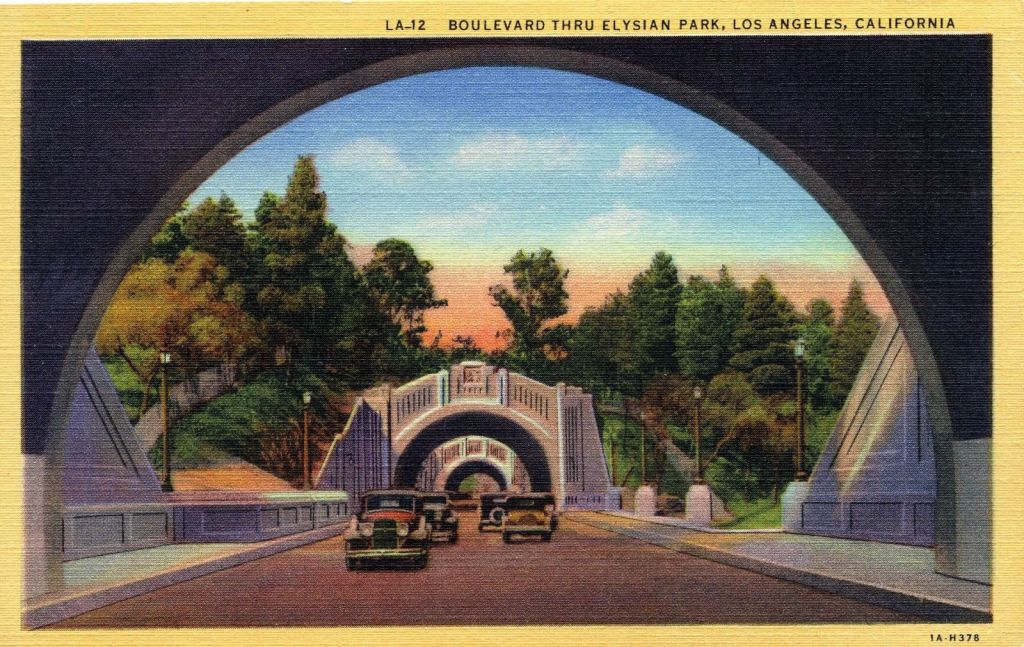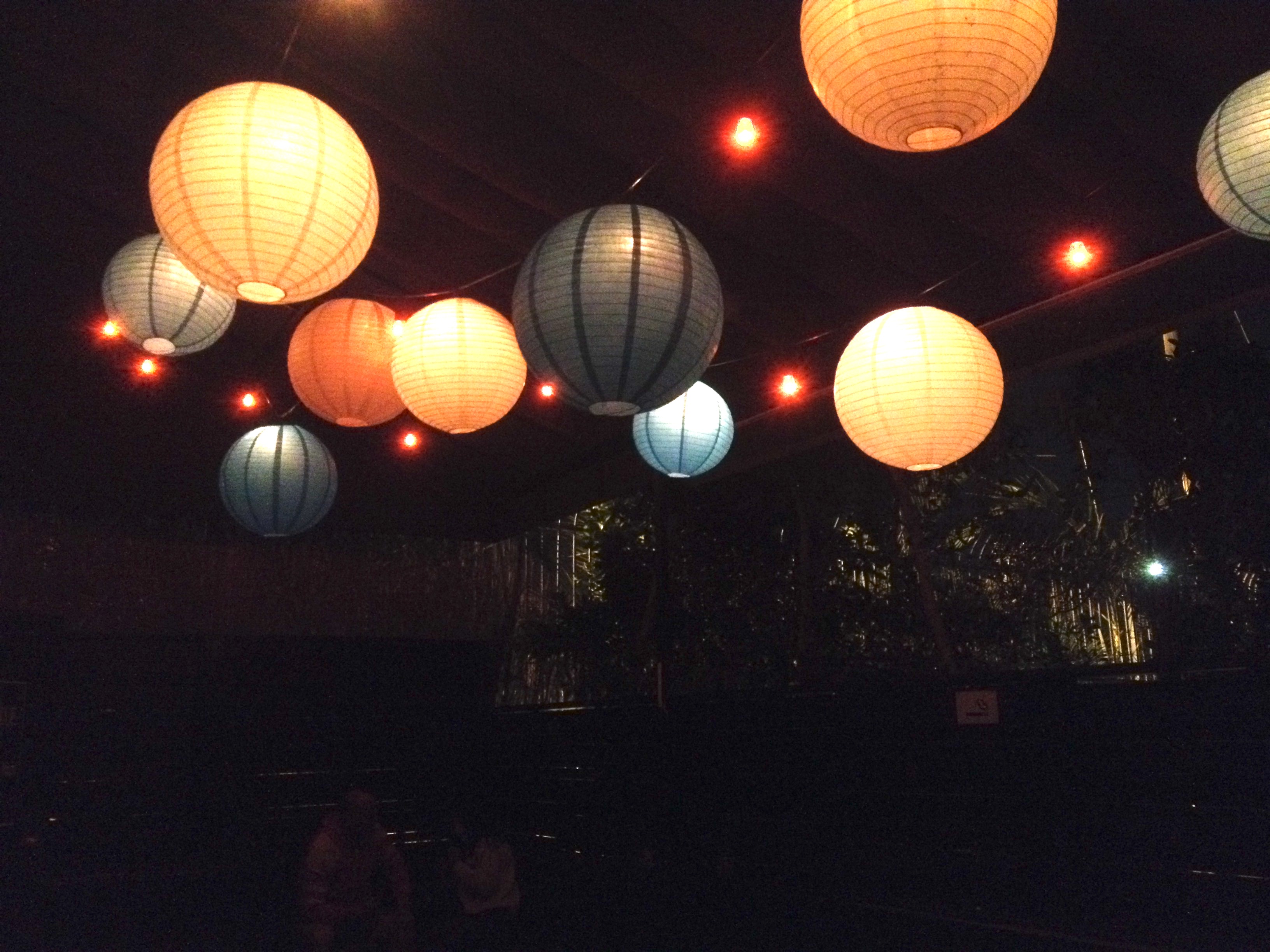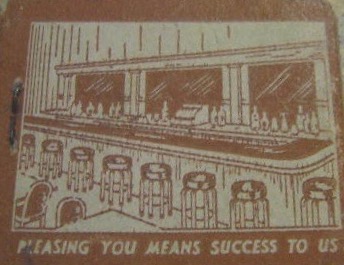
Footsies is a bar in the Cypress Park neighborhood of Northeast Los Angeles. I’ve been going there with wavering semi-regularity for about 17 years — as many as I’ve lived in Los Angeles. Online historic information about the bar is minimal and I’d love to fill it in more, so leave comments if you can help fill in the substantial blanks. (Thanks to “K” for the comment that helped fill in some blanks!)

I prefer to walk to my local, but over the years many of my friends have chosen Footsies as a hangout. I suspect this has less to do with it being near any of their residences but rather because it’s as equally convenient (and inconvenient) for people who live in the Eastside, Mideast Los Angeles, and Northeast Los Angeles… and because El Atacor’s famous. restorative, tacos de papa are within easy stumbling distance. I also suspect that many of Footsies’ patrons live outside Cypress Park, as I’ve heard people variously (and wrongly) refer to it being in Echo Park, Highland Park, Lincoln Heights, and Mount Washington. That’s not to suggest that none of the patrons are from the neighborhood, but El Recreo Room (located around the corner) has more of a “locals” vibe whereas Footsies feels a bit like a roadhouse, situated as it is just off the Arroyo Seco Parkway and Golden State Freeway.
Footsies is located about six kilometers from my apartment, a manageable distance before a night of revelry but a much more daunting one after. I could ride my bicycle along the most charming stretch of the Los Angeles River Bike Path, the Glendale Narrows, but the ride home would be less enjoyable, I suspect (not to mention less safe). I have on at least one occasion walked to Footsies, but faced with a six-kilometer stroll home, I took a gypsy cab home. Footsies is also served by Metro‘s 28, 81, 90/91, 94, 251, Rapid 751, and Rapid 794 bus lines. The Cypress/Lincoln Heights train station is a mere 450 meters away. None of those are especially convenient for me, though, as all require me to make a transfer, and I’ve only taken the bus to and from Footsies once. Not to mention, there’s a perfectly adequate bar a mere fifty meters from my front door.
According to the County Assessor, the building in which Footsies is located was built in 1924, when that section of Figueroa Street was known as Dayton Avenue, at an intersection then served by two lines of the Los Angeles Railway. This area had been the northeastern corner of the city for 114 years, until 1895, when Los Angeles annexed the communities of Sycamore Grove and Highland Park. Southern Pacific Railroad opened their large Taylor Yard nearby in 1924 and Cypress Park, Glassell Park, and Lincoln Heights were home to many bakeries — a few of which remain in operation. If the address number of the lot before Dayton became Figueroa was the same as it is now (which is a bit of a gamble) then there was a pre-existing market there operated by Hunt & Bennett, listed in newspapers of the day as licensed dealers of Good Luck Margarine and Sulzberger’s Majestic Hams and Bacon.

The first tenant of the new building may’ve been Howard Hardware, which was in business as late as 1932. With the opening of the Arroyo Seco Parkway, part of Figueroa (including the Figueroa Street Tunnels) became the new parkway. Parts of Dayton and Pasadena avenues were reconfigured as Figueroa Street.
By 1933, the building was home to a tavern, Cliff’s Inn, operated by expert marksman (and member of both the L.A.-Santa Monica Gun Club and the Red Lion Skeet Team) Major R. Slater and “Pete” and (according to its advertisements) known for its steaks, cocktails, and annual free venison dinners. Cliff’s Inn was listed as “for sale” in 1937 with the reason “owner leaving” and was again listed as “for sale” in 1938 and ’39.

Cliff’s Inn was still in business as late as 1946, however, and still run by Slater although Pete seems to have been replaced by Fred Seney. On 30 November 1945, in an article titled “Pair Rob Cafe of $4500,” the Los Angeles Times reported:
Two youthful gunmen, working quietly and nonchalantly, yesterday held up the Cliff Cafe, 2640 N. Figueroa St. lined up the customers against the wall, forced the two proprietors to open a safe and hand them $4500 in cash and then escaped in an automobile. The proprietors, Maj. Slater and Fred Seney, said none of the customers was robbed. One youth, about 17, held a .45-caliber automatic pistol on the customers, while the other, about 25, marched the two men to the safe at the back of the cafe.
It seems that Cliff’s Inn was then robbed two more times in quick succession. The Los Angeles Times reported on 10 January 1946 in a piece titled “Bar Holdup Repeated“:
Using the same tactics which on Dec. 7 cost him $1200, three swarthy bandits yesterday held up and robbed Major R. Slater, co-owner of a beer parlor at 2640 N. Figueroa St., of $2000, he reported to the police.
In 1948, the County Assessor records that the building underwent a substantial alteration. I’m not sure what it entailed but there’s still a glass-windowed booth in the back were workers’ could formerly cash their paychecks. In the same corner is a trap door which leads to a basement. On the wall above, there was formerly a doorway which led to the dining room half of the establishment (now walled off). It seems likely that it was in 1948 that Cliff’s Inn sold, after which, Major Slater and his wife, “Mrs. Major R. Slater,” moved to Palm Desert. In August 1958, he and his wife “Mrs. Major R. Slater” took a cruise aboard the SS Matsonia to Hawaii, which was the sort of thing deemed worthy of newspaper coverage back then (my grandparents’ trip to Hawaii.
The buyer of Cliff’s Inn was Ferdinand “Footsie” Gioia, who almost certainly is responsible for turning it into Footsies. Gioia had owned a cafe nearby on San Fernando Road called the Round Up which was put up for sale in 1948. He also lived nearby with his wife, Sophie, on Fletcher Drive. In November 1962, Ferndind and and Sophie were charged with doing business under the fictitious firm name of Footsie’s Market on Fletcher. It seems likely that they had either operated a legitmate market their or were planning to as it’s still a mini-market today, Julie’s. Footsie, the man, though, died a few months later in April of 1963.
The next owner, most likely, was Pietro Ferro. Ferro was an Italian immigrant born around 1890 who lived in Los Angeles with his wife, Rose, and his mother, Maria. The name Pietro Ferro appears in several newspaper articles and court documents and, assuming they’re all the same figure (and they seem to be), he lived a decidedly colorful life. In 1910, Ferro’s name made the paper when he was wounded by a knife-wielding James Grucci at the Alexandria Hotel. In 1921 he was tried in court for assault to commit murder. In 1928, he was found guilty of swindling a near-blind G.C.B. Swisher out of $1,835.43 by leading him to believe he was purchasing a Hudson which was never delivered. In 1933, Ferro opened Pietro Ferro Winery in City Terrace. In 1954, Ferro won a lawsuit against Citizens National Trust & Savings Bank of Los Angeles to collect insurance money owed after 200,237 gallons of wine he’d stored at another winery which had been destroyed by a fire in 1950. Ferro died in December 1967 and funeral mass took place at Saint Peter’s Italian Catholic Church in what had formerly been Little Italy. His wife, Rose, died in 1973.
When I first started going to Footsies, there was a black-painted drop ceiling with dollar bills affixed to it. The owner then, I believe, was named Paul. He died either of cancer or suicide (committed to avoid dying of cancer) and rumor has it that after his death, his drug-addicted son removed the bills from the ceiling — and from a jar which patrons had filled to pay for the former owner’s funeral — in order to fuel his habit.
In 2003, Footsies was purchased by alternative rocker Greg Dulli and it was made it over in the style of The Short Stop and its sister bars: Monty’s, La Cita, El Chavito, and Glendale’s long-defunct The Scene. Legend tells that when Dulli was in the Afghan Whigs, he and his bandmates enjoyed hanging out at the R Bar in the Marigny neighborhood of New Orleans — and in which Dulli subsequently purchased stake. I’ve been to R Bar and the post-remodel aesthetics of Footsies are vaguely similar but I’d never guess without hints that Footsies’s theme was supposed to be New Orleanian — perhaps because any kind of Big Easy vibe is completely obliterated by the standard Van Halen/Thin Lizzy/Motörhead type stuff so depressingly ubiquitous at bars favored by white folks.

If one looks around you can find a few obvious nods to New Orleans. There’s a sign labeled “Krewe of Choctaw” and a black and white photo of a second line shares the wall space with the paintings and photographs of naked white women. If you ask me, though, a little Warren Mayes, Tim Smooth, Tombstone, Take Fo’, No Limit, Cash Money, Parkway Pumpin, Big Boy, or Untouchable on the jukebox and turntables would do wonders in creating a New Orleans atmosphere. And, although neither are especially New Orleanian-flavored, it would be remiss of me to not give shout-outs to Brasilian to Disco and Discotan, two music nights which are worth celebrating for showcasing music which is far less run-of-the-mill than what you’ll typically be confronted with.

Footsies is often described as a “dive bar,” although it does not meet my definition of one. Perhaps it once was but it’s not even remotely disreputable today… and they accept credit cards. It’s also often described as a “hipster bar,” which it also is not in any meaningful way. After all, there is no obvious Millennial bait (e.g. chalkboard menus, communal seating made of reclaimed wood, “Instagrammable” installations, and murals which incorporate inspirational Pinterest quotes). Footsies is also lit with regular old lightbulbs (not Edison bulbs) and bar candles. It’s also not named after a forgotten early 20th-century real estate tract. There is no password used to keep out the unfashionable.
Not being a hipster bar, the cocktails are not made by Edwardian cosplay mixologists and drinks are served in normal barware, not pewter cups or Mason jars. The tap changes but there’s usually something from Glassell Park’s Eagle Rock Brewery or San Diego’s Modern Times Beer. There are always macrobrews as well. There are thankfully zero televisions and there’s a pool table. I suppose all of that might somehow qualify as either “divey” or “hipster” if you typically do your drinking at Big Wang’s or Applebee’s.

My preferred bar soundtrack is either very quiet music or none at all, allowing for meditation, reading, or conversation. Footsies opens at 5:00 pm daily and most days remains pretty quiet until about 9:00. Back in the day, they used to barbecue on an oil drum smoker in the parking lot where the smoking patio (with a frequently alarm-sounding gate) is now. There was a group of regulars who gathered there who called themselves “Team Sunday.” I believe Team Sunday disbanded long ago and when I went most recently I didn’t recognize any of the bartenders, the bar back, or the door guy — but I did inevitably run into an old friend. The crowds and cigarette smoke grew thicker and the music increased in volume to deafening levels but as the well whiskey flowed, my ambivalence slowly drowned and washed away.
MORE ON FOOTSIES
“Ghosting Around Footsies, Highland Park, CA“
Support Eric Brightwell on Patreon

Eric Brightwell is an adventurer, essayist, rambler, explorer, cartographer, and guerrilla gardener who is always seeking paid writing, speaking, traveling, and art opportunities. He is not interested in generating advertorials, cranking out clickbait, or laboring away in a listicle mill “for exposure.”
Brightwell has written for Angels Walk LA, Amoeblog, Boom: A Journal of California, diaCRITICS, Hidden Los Angeles, and KCET Departures. His art has been featured by the American Institute of Architects, the Architecture & Design Museum, the Craft Contemporary, Form Follows Function, Los Angeles County Store, the book Sidewalking, Skid Row Housing Trust, and 1650 Gallery. Brightwell has been featured as subject in The Los Angeles Times, Huffington Post, Los Angeles Magazine, LAist, CurbedLA, Eastsider LA, Boing Boing, Los Angeles, I’m Yours, and on Notebook on Cities and Culture. He has been a guest speaker on KCRW‘s Which Way, LA?, at Emerson College, and the University of Southern California.
Brightwell is currently writing a book about Los Angeles and you can follow him on Ameba, Duolingo, Facebook, Goodreads, Instagram, Mubi, and Twitter.





Footsies was owned by Ferdinand Gioia.
LikeLiked by 1 person
Thanks for that — it helped fill in a major blank. His nickname, apparently, was Foostie (but then maybe you already knew that).
LikeLike